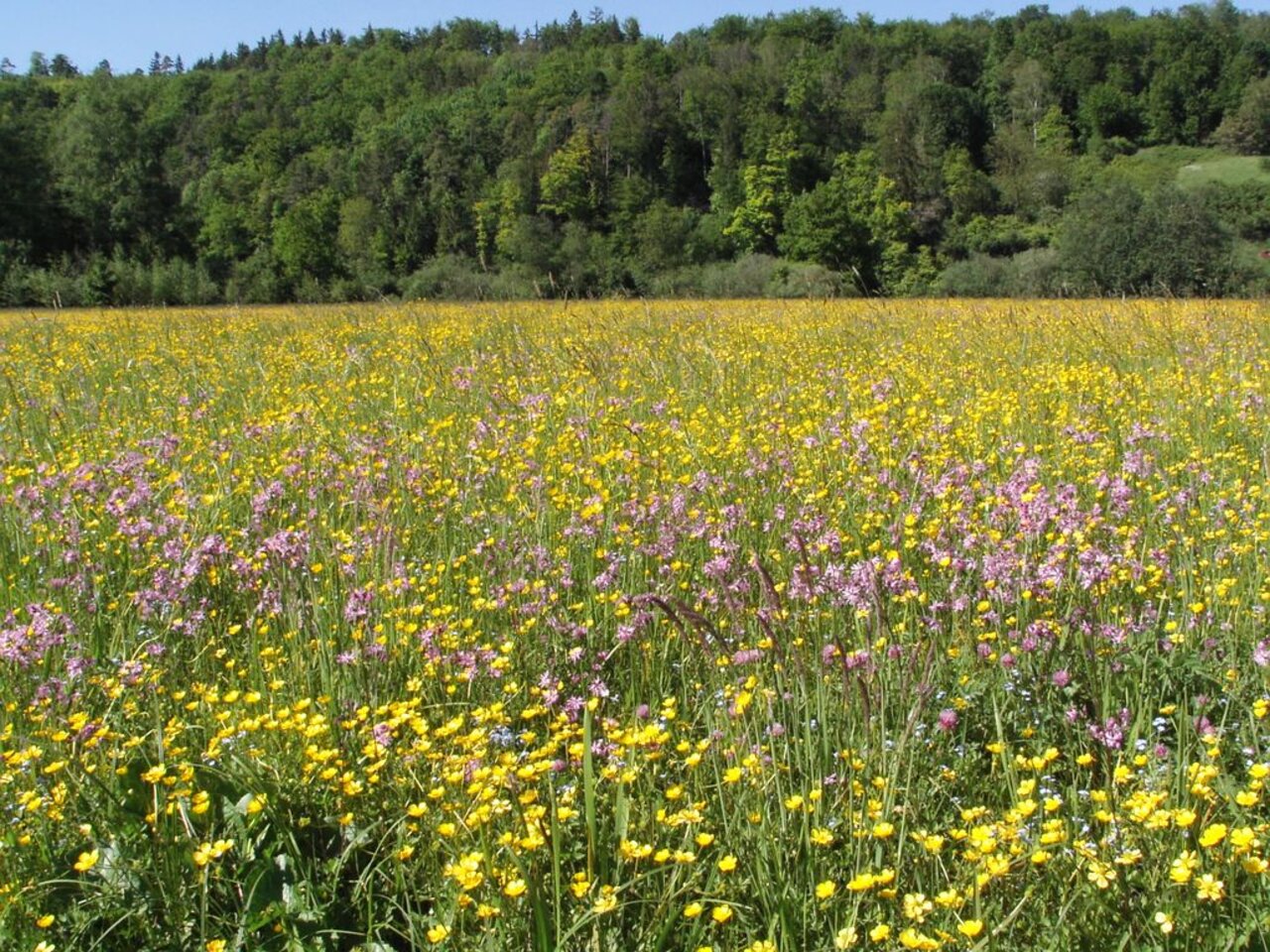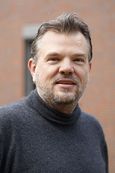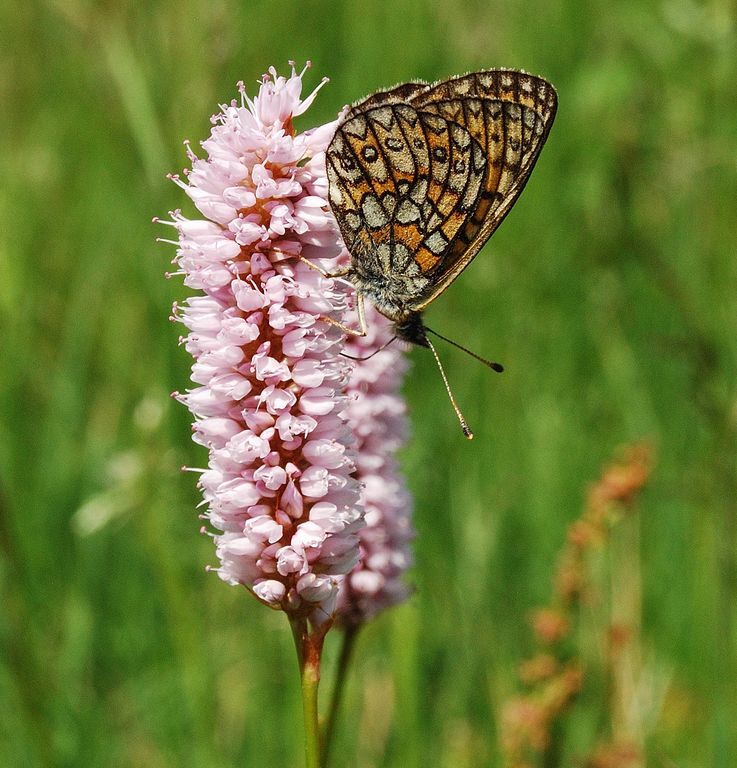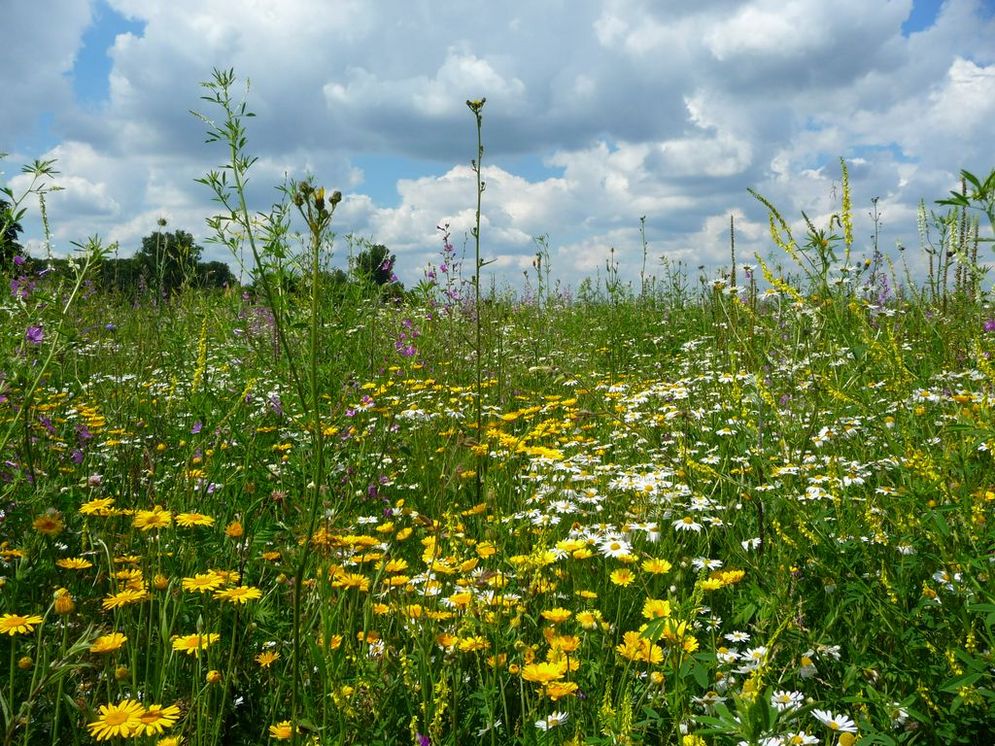Project
Effects of the Common Agricultural Policy of the EU on the conversion of biodiversity of grassland (GAPGrün)

Effects of the new policy framework of the CAP on the biodiversity of grasslands (GAPGrün)
Starting with the agricultural reform of 2013 new instruments for grassland conservation and protection have been adopted. They have been implemented with the intention to stop the strong decline of biodiversity in agricultural landscapes. One of the crucial factors is the ongoing reduction of species-rich grassland.
Background and Objective
High prices of agricultural products and the growing use of biomass as an energy source increased the demand for a more intensive use of grassland. Especially the area of fallow and low input grassland areas was decreasing for a long time. To counter these trends the Common Agricultural Policy (CAP) of the EU focused more on environmental objectives. Thus, in Germany, the conversion of grassland into cropland is prohibited in FFH areas. Furthermore, at the European level, the delimitation of the areas that can receive direct payments has been extended, so that some biotopes that are valuable in terms of nature conservation, such as heaths, now also benefit from direct payments.
Our project addressed the resulting effects on nature conservation. We also assessed the efficiency of the funding instruments applied in Germany.
Based on this, we formulated recommendations for the further development of land use-related political regulations and instruments in order to improve grassland protection.
Target Group
Ministries of Agriculture and Environment, farmers, consulting services, EU-commission
Approach
Based on data of the integrated accounting and control system (IACS), we analyzed the development of the grassland area and its utilization intensity. We took information on site specific conditions and local agricultural structures into account. This included, for example, agri-environmental measures, location in a protected area, livestock density or slope. Linking data from HNV (High Nature Value) monitoring and meadow bird monitoring in northern Germany on the one hand and agricultural land use on the other made it possible to quantify the influence of changes in the landscape matrix on these target indicators and to improve the extrapolation of these indicators at the national level. Furthermore, successful funding concepts were indentified and investigated through a European-wide analysis.
In addition, we carried out document analyses and interviews in order to
- present successful examples of conservation of high nature value grassland in other EU Member States,
- to get an assessment of the effectiveness and efficiency of the new instruments for grassland conservation from the point of view of farm managers and administrators,
- to analyse under which framework conditions the conservation of grassland is efficiently promoted by agricultural policy.
Based on the findings, we made recommendations for the further reform of greening in order to achieve a more efficient use of subsidies in practical implementation with regard to nature conservation and environmental protection.
We provided recommendation for the future development of the CAP with respect to the protection of grassland.
Data and Methods
The analyses on grassland development were carried out largely on the basis of IACS data, which were blended with other data. Furthermore, document analyses and interviews were conducted.
Our Research Questions
- How can the differences in the perimeters of grassland areas between the different data sources be explained, and what is the area relevance?
- Does greening contribute to the protection of permanent grassland?
- How is grassland protected by agri-environmental and climate programs?
- How do the less-favored area payments contribute to the protection of grassland?
- Does the new definition of grassland result in positive effects on the biodiversity of agricultural land?
- How do grassland areas and intensities of grassland use change as a result of the CAP reform and which influences are of importance?
- Does permanent grassland contribute to increased biodiversity in agricultural landscapes (investigated using the example of meadow bird populations in northern Germany)?
- How is high nature value grassland promoted in other EU member states?
Results
The development of permanent grassland (PG) area and intensity of use was investigated using IACS data from the German states of BB, BW, NI, NW, RP and SH for the years 2010 to 2015. The influence of farm, regional and site factors was analysed. The focus was on possible changes caused by the CAP, which first became apparent in 2015, but also on the distribution of the PG with its use intensities in general.
Core results of the data analysis:
- Even though PG area increased by 1.5% in 2014 to 2015, this will primarily be existing grassland and not new establishment. The reason for this was the extension of the grassland definition according to Article 4 (1) h) of Regulation (EU) 1307/2013, according to which, for example, heaths now was eligible as grassland. Furthermore, new allocations of payment entitlements provided an incentive for the subsequent declaration of PG areas.
- PG is primarily located in regions with below-average yield potential (soil index < 50). In 2015, the PG area decreased compared to 2014, especially on the poor sites, while it increased on the better ones. The latter is likely to be explained by the alignment of payment entitlements, which led to previously unreported PG being reported.
- From 2014 to 2015, a decrease in PG was observed on flat terrain. This was mainly due to an extensive conversion of grassland in Lower Saxony as a result of the implementation of the CAP reform: between 19 December and 31 December 2014 the ban on conversion was lifted here.
- Between 2010 and 2015, the largest change in terms of area by farm orientation was the decline in PG in dairy farms operating outside of protected areas ("normal landscape"). In the same period, the dairy herd increased. Feeding, especially of high-yielding dairy cows, is only conditionally linked to grassland.
- The intensity of use of PG (measured in roughage-eating livestock units per hectare of main forage area (RLU/MFA)) was at least 15 % lower in specially protected areas compared to the normal landscape, whereby the average stocking rate varied greatly in the protected areas.
- Farms with a stocking rate between 0.3 and 1 RLU/MFA were characterised by a particularly high proportion of valuable HNV grassland.
- Against the background that PG in protected areas was disproportionately often farmed by organic farms, it is critical to see that these farms were exempt from greening. This means that these farms could convert grassland without being penalised under the CAP, provided they did not receive support under the second pillar, which prohibited this. In some federal states the prohibition of grassland conversion was not part of the support requirements for organic farming (e.g. Lower Saxony, Rhineland-Palatinate, Brandenburg).
- The project provides evidence that an increase in management intensity (measured in RLU/MFA per monitoring area) leads to a decline in some meadow bird species.
- Much valuable HNV grassland is located in large farms. It would therefore be desirable if thresholds for agri-environmental and climate measures did not exclude these farms, or if the attractiveness of participation were increased by significantly lowering restrictions with regard to maximum payment amounts per farm.
Links and Downloads
Thünen-Contact

Involved Thünen-Partners
Involved external Thünen-Partners
- Hochschule für Forstwirtschaft Rottenburg (HFR)
(Rottenburg am Neckar, Deutschland) - Michael-Otto-Institut im NABU
(Bergenhusen, Deutschland) - PAN - Planungsbüro für angewandten Naturschutz GmbH
(München, Deutschland) - European Forum on Nature Conservation and Pastoralism
(Lampeter, Großbritannien (inkl. Nordirland))
Funding Body
-
Federal Agency for Nature Conservation (BfN)
(national, öffentlich)
Duration
11.2015 - 11.2019
More Information
Project funding number: FKZ 3515 88 0100
Funding program: BMUB - Umweltforschungsplan
Project status:
finished
Publications to the project
- 0
Schoof N, Luick R, Ackermann A, Baum S, Böhner HGS, Röder N, Rudolph S, Schmidt TG, Hötker H, Jeromin H (2019) Auswirkungen der neuen Rahmenbedingungen der Gemeinsamen Agrarpolitik auf die Grünland-bezogene Biodiversität [online]. Bonn: BfN, 234 p, BfN Skripten 540, zu finden in <https://www.researchgate.net/publication/335580755_Auswirkungen_der_neuen_Rahmenbedingungen_der_Gemeinsamen_Agrarpolitik_auf_die_Grunland-bezogene_Biodiversitat_-_BfN-Skript_540> [zitiert am 04.09.2019], DOI:10.19217/skr540
- 1
Luick R, Freese J, Reisinger E, Röder N, Schoof N (2019) Der agrarpolitische Rahmen. In: Naturnahe Beweidung und NATURA 2000 : Ganzjahresbeweidung im Management von Lebensraumtypen und Arten im europäischen Schutzgebietssystem NATURA 2000. 2. überarb. und erw. Aufl. Bad Sassendorf: Arbeitsgemeinschaft Biologischer Umweltschutz, pp 303-328
- 2
Ackermann A, Röder N, Rudolph S, Baum S (2019) Does nature protection status affect grassland utilisation and farming? - A German case study. Grassl Sci Europe 24:110-112
- 3
Röder N, Ackermann A, Baum S, Böhner HGS, Rudolph S, Schmidt TG (2019) Small is beautiful? Is there a relation between farmed area and the ecological output? - Results from evaluation studies in Germany : paper prepared for presentation at the 172nd EAAE Seminar "Agricultural Policy for the Environment or Environmental Policy for Agriculture?" ; May 28-29, 2019, Brussels. 15 p
- 4
Baum S, Rudolph S, Röder N, Ackermann A (2019) The unknown 25% - What kind of grassland is not reported to IACS? Grassl Sci Europe 24:116-118
- 5
Röder N, Ackermann A, Rudolph S (2018) Does conservation status influence the temporal development of agriculturally used permanent grassland in Germany? In: Horan B (ed) Sustainable meat and milk production from grasslands : proceedings of the 27th General Meeting of the European Grassland Federation, Cork, Ireland, 17-21 June 2018. Wageningen: Wageningen Academic Publ, pp 667-669
- 6
Röder N, Ackermann A, Baum S, Rudolph S (2018) Status quo und aktuelle Entwicklungen der landwirtschaftlichen Flächennutzung in Deutschland [inkl. Zusatzmaterial]. Natur Landsch 93(6):250-257, DOI:10.17433/6.2018.50153581.250-257
- 7
Röder N (2018) Zur Situation der Grünlandbewirtschaftung in Deutschland : Kurzstellungnahme für den Thüringer Landtag. Braunschweig: Thünen-Institut für Ländliche Räume, 17 p
- 8
Laggner B, Röder N (2017) Does land fragmentation currently limit grazing in dairy farms in Lower Saxony, Germany? In: Porqueddu C, Franca A, Lombardi G, Molle G, Peratoner G, Hopkins A (eds) Grassland resources for extensive farming systems in marginal lands: major drivers and future scenarios : Proceedings of the 19th Symposium of the European Grassland Federation ; 7-10 May 2017. Sassari: EGF, pp 179-181
- 9
Röder N, Laggner B, Osterburg B, Schmidt TG (2016) Grassland: quantification of the environmental services provision. Grassl Sci Europe 21:684-686
- 10
Luick R, Röder N (2016) The first pillar of the new CAP - implications for low input grasslands. Grassl Sci Europe 21:603-605
- 11
Röder N, Schmidt TG, Osterburg B (2015) Grünland: Mehr als nur Viehfutter. Braunschweig: Johann Heinrich von Thünen-Institut, 6 p, Thünen à la carte 1, DOI:10.3220/CA_1_2015
- 12
Osterburg B, Röder N, Schmidt TG (2014) Grünlandschutz in der GAP : Erfordernisse, Erfahrungen, Erwartungen. Loccumer Prot 2014,05:121-127

![[Translate to English:] [Translate to English:]](/media/_processed_/2/0/csm_LV_Bei_Hornburg_Quelle_Johanna_Fick_neu_da89674833.jpg)
![[Translate to English:] [Translate to English:]](/media/_processed_/2/0/csm_LV_Bei_Hornburg_Quelle_Johanna_Fick_neu_3aae309567.jpg)







